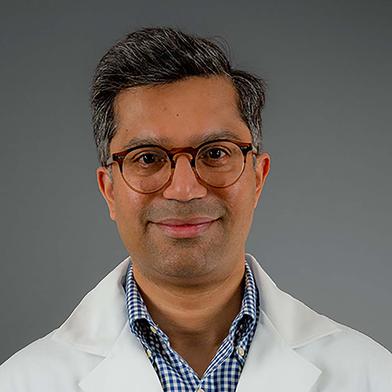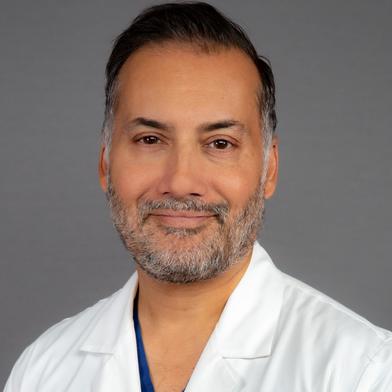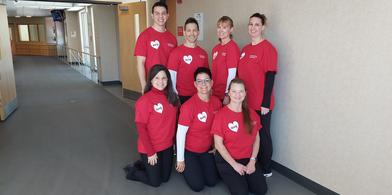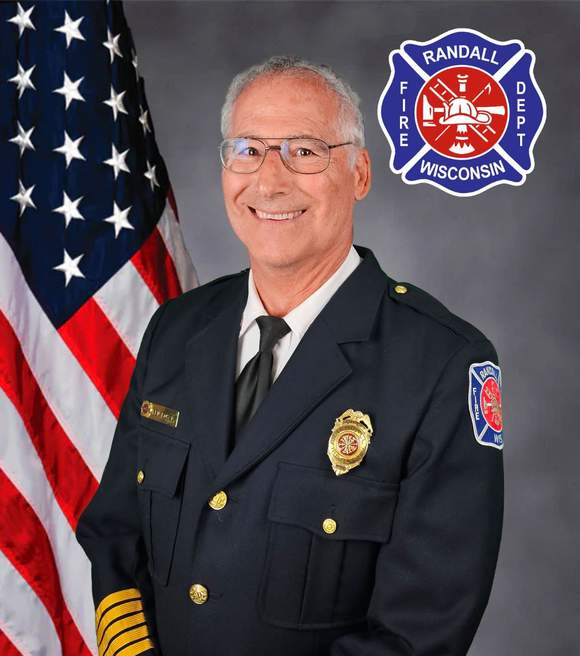
Ken Foszcz, Retired Fire Chief of the Town of Randall
For the many firefighters and other first responders in our Kenosha County communities, saving lives is part of their job description. Sometimes, that means saving the life of one of their own.
Ken Foszcz is accustomed to a life that is always in motion. “I was very, very, very active. I used to cut trees down and chop them up for firewood,” Ken recalls. “For thirteen years, I regularly did a boot-camp-like exercise program with an instructor from the military.”
A carpenter for thirty years, Ken switched to fighting fires more than twenty years ago. In 2022 – at the age of seventy-one – he was still at it, serving as Fire Chief of the Town of Randall Fire Department. “We were helping fight a fire in Genoa City one day, and I was crawling around a burning building in the heat and smoke with the guys in the engine company I led. Later I thought, ‘This is a young man’s game,’” Ken said. He retired soon afterwards.
But Ken defines “retired” differently than many seniors. He still works as a certified fire investigator for the Kenosha County Fire Investigation Task Force – the group he helped organize to determine the origin and cause of fires across the county. At the age of seventy-four, Ken is still crawling around in burned buildings, but only after the flames are extinguished.
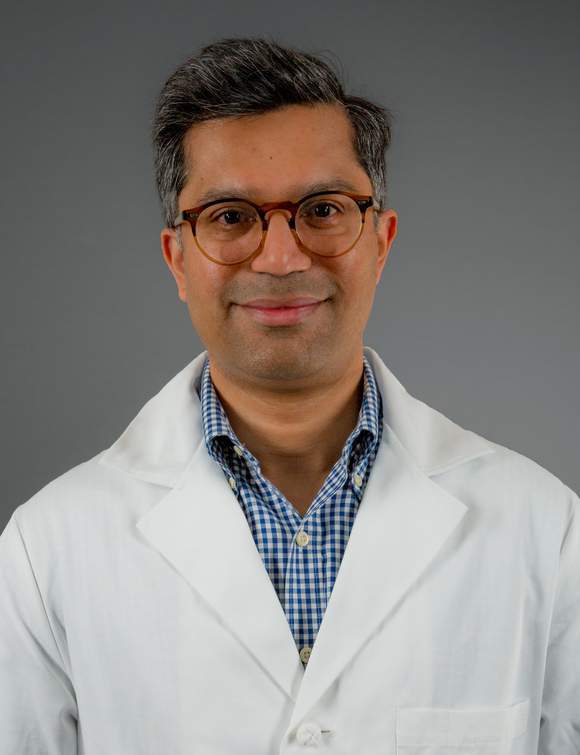
Omar Cheema, M.D.
Right place, right time
For the last quarter century, Ken’s work has placed him in nearly constant contact with people who save lives all the time. He just never realized that one day the life they saved would be his own.
It happened during a training class that Ken was leading at the Randall Fire Department. “We were doing flammable liquid fires and putting them out with a hand extinguisher,” Ken recalls, “and that's when I had the cardiac arrest. Without warning, my heart just stopped. Fortunately, I was with people who knew what to do and how to do it.”
His fellow firefighters started CPR, performed an EKG, used a defibrillator to shock Ken’s heart back into normal rhythm, and then rushed him to the Emergency Department at Froedtert South Pleasant Prairie Hospital. That’s where Ken met Dr. Omar Cheema, an interventional cardiologist.
“Ken’s good fortune is that he had a pacemaker implanted by another physician a year earlier because his heart was beating too slowly,” Dr. Cheema says. “His pacemaker recorded every electrical disturbance in his heart, so I was able to download that data. It showed that for one excruciatingly long minute, Ken had a lethal irregular heartbeat that we call ventricular tachycardia, or V Tach, which can result in death if it's not interrupted.”
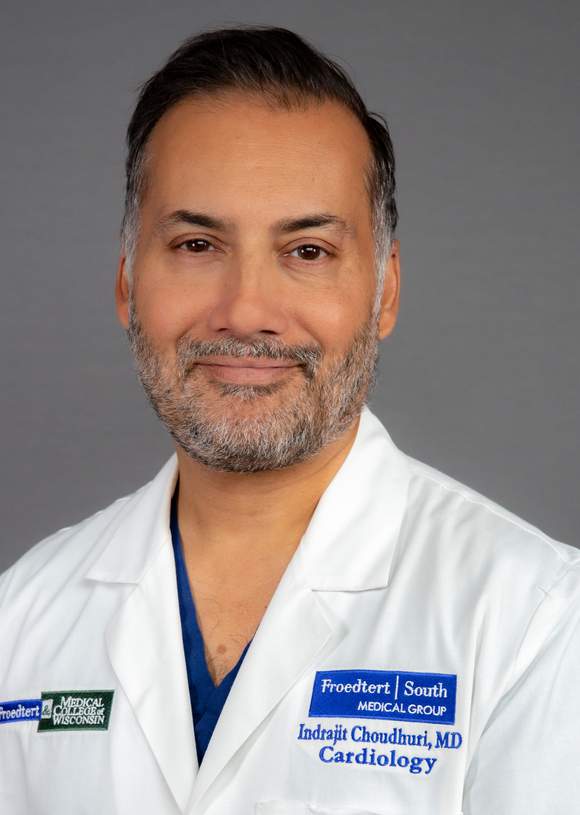
Indrajit Choudhuri, M.D.
Pinpointing the right problem
“Job one with V Tach is making sure it’s not being caused by blockages in arteries in and around the heart,” Dr. Cheema says. “I performed an angiogram that showed Ken had mild to moderate blockages in some of those arteries, but I didn’t stop there. I further evaluated the blockages with what we call a pressure wire test that confirmed that the blockages were, in fact, mild to moderate and weren’t causing Ken’s V Tach,” Dr. Cheema says. “That’s the kind of meticulous approach we take with every patient, because it helps us pin down the actual cause of a patient’s heart issues.”
Dr. Cheema then immediately called in his colleague, Dr. Indrajit Choudhuri, a cardiac electrophysiologist who specializes in diagnosing and treating irregular heartbeats.
“I replaced Ken’s pacemaker with a specific type of defibrillator that paces the heart all the time in a very coordinated manner,” Dr. Choudhuri says. “I continue to see Ken in my office every few months to make sure the device is performing as we want it to, and I continue to review the data his device transmits to me via a bedside monitor. That means we have access to the data all the time in case something happens, so we can act on it and in the moment,” Dr. Choudhuri says. “Plus, if Ken suffers another cardiac arrest, the defibrillator is designed to automatically restart his heart.”
“Dr. Cheema and Dr. Choudhuri are great,” Ken says, “and the fire chiefs I talk to in Kenosha County say the same thing. They were very, very professional and checked everything out. I haven't had an issue since. I feel great.”
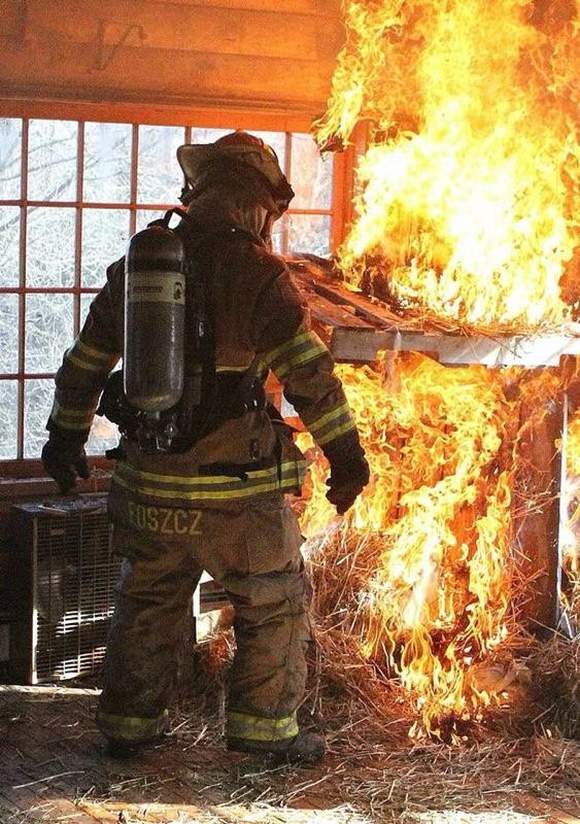
Ken Foszcz, Retired Fire Chief of the Town of Randall, leads a firefighter training exercise.
A community at risk
“What stands out about Ken’s case is the fact that he was a fireman in a room full of other firemen who knew CPR,” Dr. Cheema says. “How lucky was that for him? And Ken not only passed out in a room full of firefighters, but he had a pacemaker, which allowed us to know that it was an electrical disorder that caused him to pass out.”
“Ken was helping train firefighters and emergency medical technicians to help other people in our communities,” Dr. Choudhuri says, “and those were the people who were able to help Ken in his moment of need. It doesn't get more poetic than that.”
“Nobody is immune from these dramatic, life changing events,” Dr. Choudhuri says. “Even the healthiest people, or the people who are considered experts in the field of emergency medicine – a paramedic, a firefighter, or a physician – we're all potentially at risk.”
“Ken’s story emphasizes the importance of knowing how to perform CPR to keep blood flowing to the brain of a family member, friend, co-worker or even a complete stranger who has suffered cardiac arrest,” Dr. Cheema says.
“It’s so important that as many people in the community as possible are able to recognize dire situations like these, whether somebody is having a stroke, a heart attack, or a cardiac arrest,” Dr. Choudhuri says. “Ideally, everybody would have some basic comfort level with performing CPR. This is one way that we know can help prevent heart disease from becoming lethal and fatal.”
It worked for Fire Chief Foszcz. “Every day is a gift now,” Ken says.
Cardiac Arrest by the Numbers
According to the Sudden Cardiac Arrest Foundation and the American Heart Association:
- Every year more than 356,000 people in the U.S. suffer a cardiac arrest someplace other than a hospital
- That’s nearly one thousand people per day
- Nearly ninety percent of them die
- Signs of cardiac arrest include:
- Sudden collapse and unconsciousness
- Not breathing or gasping for air
- Not responding to shouting or shaking
- No pulse
- Causes of cardiac arrest include:
- Enlarged heart
- Blocked coronary arteries
- Heart valve disease
- Irregular heartbeat
- Rarely, a forceful blow to the chest
- If performed immediately, CPR can double or triple the chance of survival
- Sadly, only forty percent of cardiac arrest victims get the help they need before professionals arrive

